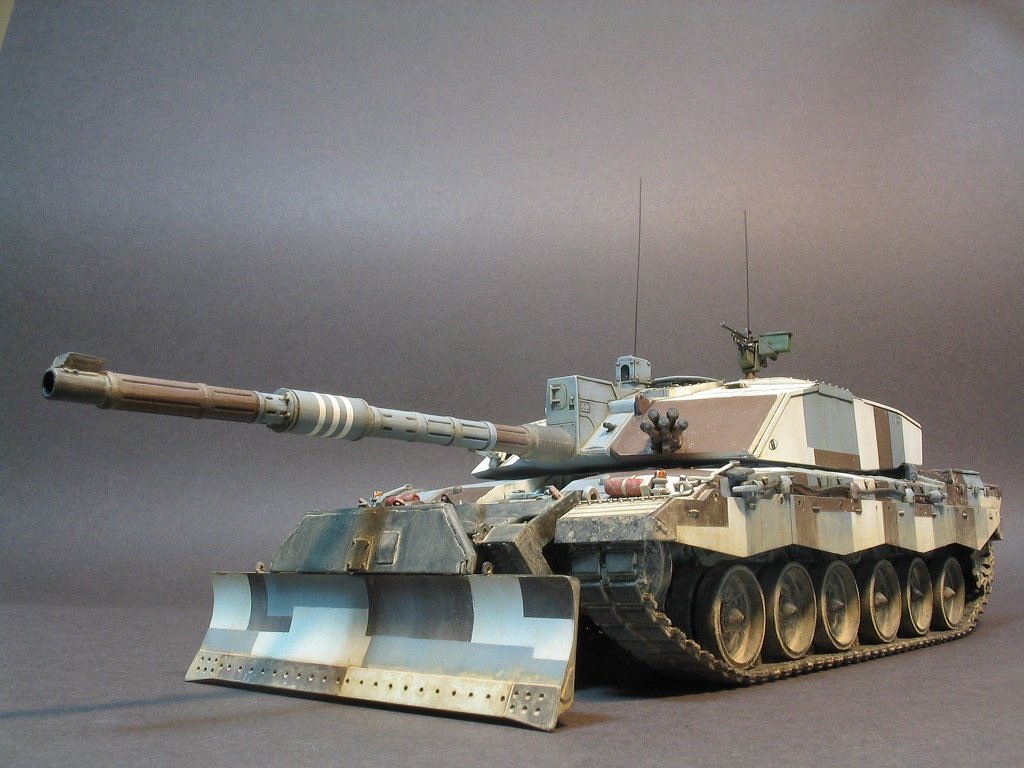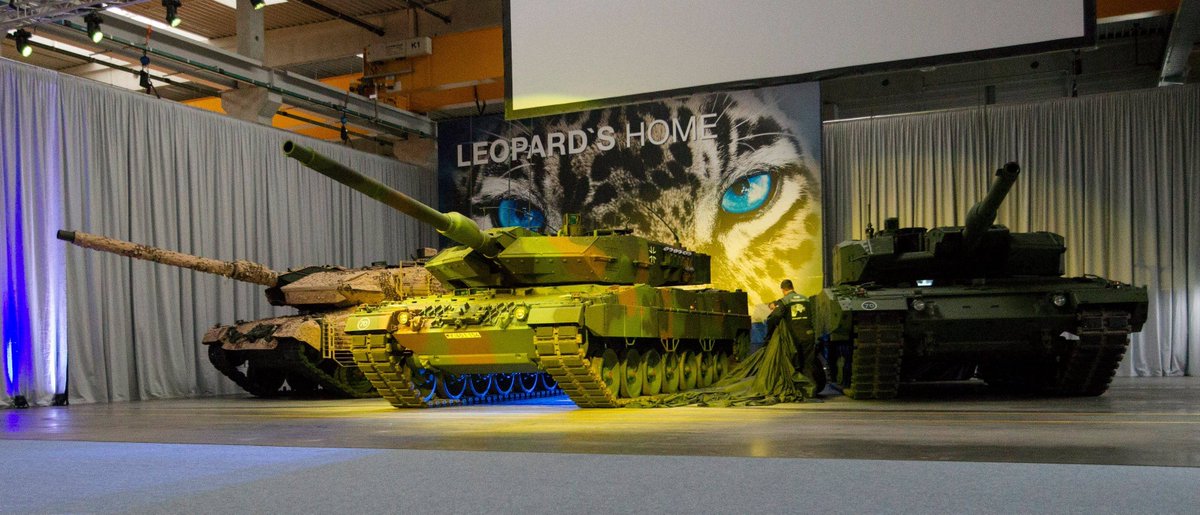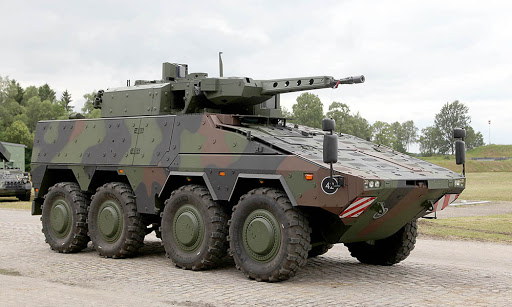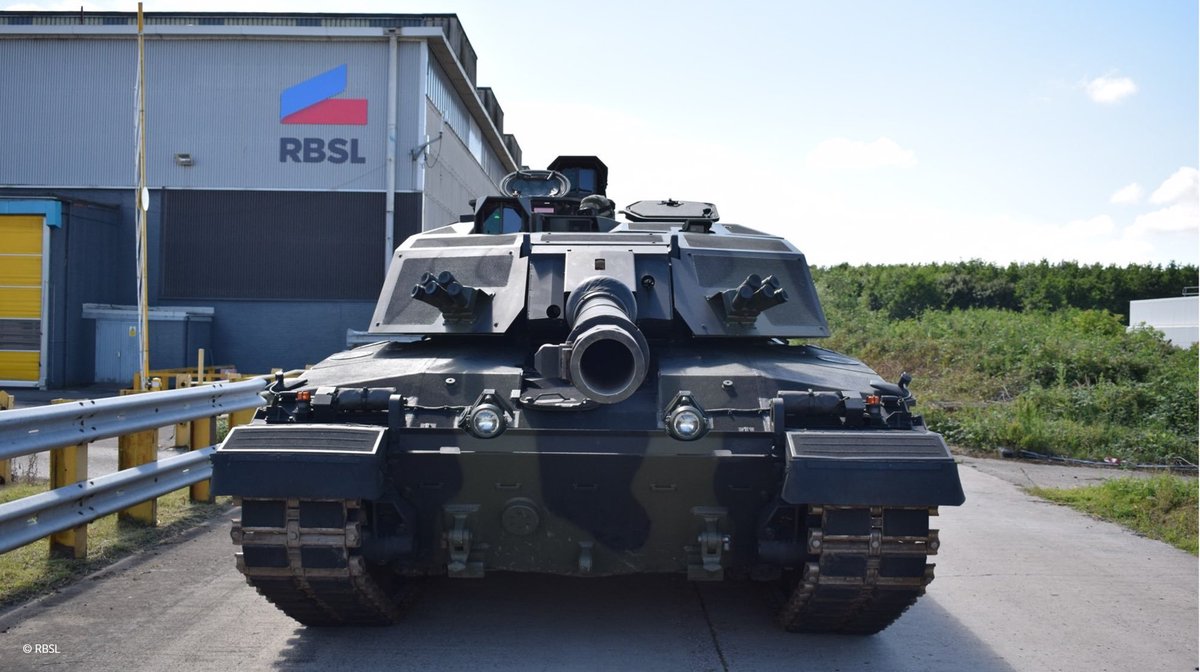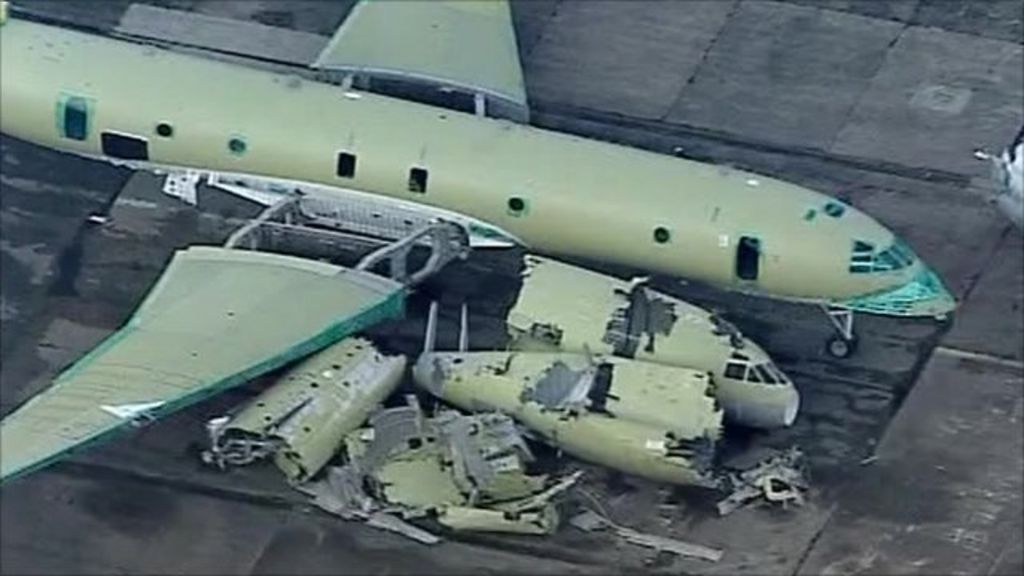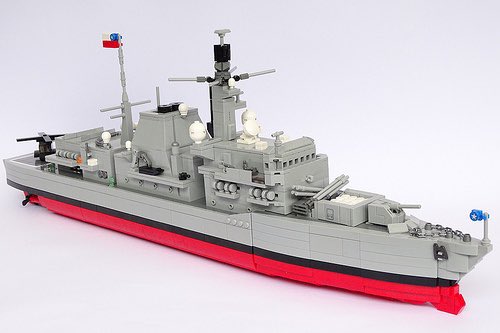
3/ Challenger's origins date to 1977 when Chobham armour made its first appearance. Around the same time, Rolls-Royce developed a new engine to replace the shockingly under-powered and unreliable British Leyland motor in Chieftain. This was the foundation for a new MBT design.
4/ Challenger 1 entered service in 1983, it was imposing with protection far superior to that of the new Leopard 2. Unfortunately, its sensors and FCS were less so, and when it took part in the prestigious Canada Cup inter-army tank competition it performed badly.
5/ Despite this Challenger served the British Army well during the first Gulf War. Afterwards, it was upgraded and finally got the turret and fire control system it deserved. By 1998, 15 years after it was first fielded, Challenger 2 could be described as state-of-the-art. 

6/ Although possessing prodigious capabilities, Challenger has found only a single overseas buyer: Oman. The UK purchased 386 plus a few driver training vehicles. Today, the total is 227 but this is expected to be cut to just 150 tanks by the Integrated Review.
7/ Challenger is now 40 years old and last received a major upgrade in 1995 when it became Challenger 2. With the amount of time that has passed, significant changes are required to bring it up to the current standard set by Leopard 2A7A1 and M1A2C Abrams.
9/ The scope of the LEP is extensive: new turret, new gun, new ammunition type, new fire control system, new sensors, new electronic architecture, new armour, plus a new (and unproven) APS system. This basically makes Challenger 3 a brand new tank.
10/ As the genesis of Abrams, Leopard 2, Ajax, Warrior, Boxer, and even Challenger 2 itself, all show, it takes a decade following NATO testing to bring a new AFV into service. So if Challenger 2 LEP gets go-ahead this year, we should expect it to achieve IOC sometime in 2031.
11/ Under existing plans the delivery timeline is IOC November 2027. This is ambitious and assumes a routine process with no glitches. However, the Government wants to accelerate the Challenger 2 LEP timeline. It aims to achieve IOC by 2025, if not before.
12/ The only way to accelerate the timeline and move the IOC date "to the left" is to condense the acquisition process.
13/ By combining the Demonstration phase with the Manufacturing phase, RBSL could bring Challenger into service sooner. This is the same approach we adopted with Ajax. The MOD greenlit Ajax at the 1st "D" in its own CADMID process, rather than at what's meant to be "M" onwards.
14/ This has resulted in a vehicle that at green light was not ready for production. When you prioritise production over development maturity we find ourselves remanufacturing vehicles already in service to meet the build standard. See F-35 decision making for details.
15/ Consequently, we are about to adopt an acquisition process that has already proved sub-optimal for Ajax for an AFV that is inherently more complex and difficult to get right.
16/ This suggests we may not have learned from the 2011 NAO report that criticised AFV acquisition for this very weakness in the process.
17/ Since no one else uses Challenger 2, we will have a single supply chain of unique parts nobody else uses. To reduce lifetime costs, we will need to order all the spares we need up-front. To ensure we don’t run out of spares, we will likely order more than we actually need.
18/ The turret being fitted to Challenger 2 is based on an older Leopard 2A4 turret. The turret ring has been reduced in diameter so that it fits Challenger. If Challenger had a larger diameter ring, we could just slot a Leopard 2 or M1A2C turret in place of the existing one.
19/ In other words, we are planning to spend a £1 billion developing a brand new turret, when a perfectly good one already exists, not only on Leopard 2A7, but also the Abrams M12A2C, Korean K2 Black Panther and on the Leclerc, which has an autoloader.
20/ This brings us to the Challenger 2 hull.
21/ The C2 Hull is not being upgraded. The existing 1,200 bhp powerpack will not get a hike in power, just a base overhaul. The problem is that Challenger 3 is likely to be heavier because it will have a heavier turret and extra armour. So it will be less mobile than it is now.
22/ The rationale for investing in a new turret for Challenger with 120mm smoothbore is it will give us an exportable turret. Anyone who is already a Leopard user will want a Leopard turret for compatibility, commonality, interoperability and lower costs with larger user base.
24/ If C2LEP runs into significant delay it, it may arrive at the same time as the KNDS / Rheinmetall MGCS Next Generation MBT. This could be disastrous for future effectiveness, equipment plans and budgets.
25/ On the other hand, if MGCS proves to be too expensive, or doesn’t suit UK requirements, or is cancelled, then we might need to conduct a further LEP to keep Challenger in service. At this point we are into diminishing returns of hulls, cost and effectiveness.
26/ Having a bespoke MBT is fine when you have a fleet of 386 tanks, as we originally had with Challenger 2. But we will only upgrade 150 Challenger 2s.
27/ To borrow Francis Tusa's (@FTusa284) expression, “British Exceptionalism” is being used to justify a risky and expensive programme for a bespoke piece of equipment at a time when the army’s budget has never been under greater pressure.
29/ "British Exceptionalism” time and time again has also been proven to include taking on others ideas, iterating and improving on them, and using the result in exceptional ways. It's a two-edged sword for sure.
30/ An AVRe Cap 3 timeline would be to deliver a new heavy tracked family for the 2035+ timescale and that necessitates an interim solution. One that can reach the desired 2025 IOC safely and that is not adversely impacted by decisions with MGCS-like projects.
31/ Before continuing it is important to remember that costs for solutions (in an oversimplified manner) are effectively a balance of aquisition cost plus the cost of running the solution over its lifetime, reduced by collaboration and eventually onward sale or scrapping.
32/ A Teamed Program selecting an initial platform to apply the proven Commonality, Modularity, Stockpile Reduction, Future Planning, Support Savings and Collaboration framework to is recommended.
33/ Spiral development of this initial platform could progress, while regenerating user and design expertise, and forming a manufacturing base with supply chain, would provide the Army with momentum for ensuring and securing its future heavy Land platforms.
34/ Acquiring Leopard 2A7 as that initial platform is likely to be more expensive in terms of initial acquisition costs. We would also have the issue of whether to retain the other existing variants (CHARRV repair and recovery, Trojan AVRE and Titan bridge-layer).
35/ Leopard 2A7 is for the Army, however, the platform with the greatest development potential, largest user group and potential for ease of adoption for *both* the Army and UK industry. 

36/ Over an expected 15-20 year period, the support costs for a Leopard 2 fleet are evidentially significantly lower. In fact, the total lifetime cost of a brand new Leopard 2 fleet could potentially be less than that for an upgraded Challenger fleet with its lower upfront cost.
37/ If we decided to dispose of Leopard 2 in the 2040 timeframe, for example (in time for delivery of the next family of vehicles), it is highly likely that a second-hand Commonwealth buyer would snap them up.
38/ Should the UK order Leopard 2, KMW would almost certainly majority build in the UK, leveraging their WFEL subsidiary as currently done for the Boxer MIV program (AVRe Cap 1).
39/ We would still use the Rheinmetall L55A1 120mm smoothbore. RBSL in Telford would still need to integrate the electrical systems and - CRITICALLY - UK armour packages. This would create even more jobs. Everyone benefits. Most of all, the Army.
40/ This would eliminate the risk associated with developing a new turret for C2LEP. And most important of all, since the Leopard 2A7 build standard is already in production, it could roll off a UK production line within 36 months of receiving a production order.
42/ Commonality: The L2A7 hull already has numerous variants for recovery, bridglaying, etc. This could be grown further with artillery turrets, High Intensity Battle urban variants, etc.
43/ Modularity: The UK could introduce GVA while seeing benefits in sharing engine types with Ajax and (to a lesser extent) Boxer MIV.
44/ Stockpile reduction: Build vehicles one Squadron at a time and pace construction for standing up units. Add a small number to production for wear/damage replacements and follow the Team Complex Weapons approach to contract flexibility.
45/ Future planning: MOD and the Team collaborate on future planning and budget. Directly feed into the types replacement which will then be from a position of experience and manufacturing rather than a "green" customer.
46/ Support savings: Leverage the Unified Support Environment model introduced with Team Complex Weapons and Team TEMPEST to deliver savings in through-life costs.
47/ Collaboration: Enter into the existing User Group and work on common variants and components, primarily for the purpose of reducing costs for features that the MOD wants.
49/ If we really cannot amortise the acquisition cost of Leopard 2 over 10-20 years, an estimated £2.5 billion, versus an estimated £1.5 billion for C2LEP, then perhaps we should gap the capability until MGCS is ready in 2035 and accept the high risk of that program delivering.
50/ As things stand, with C2LEP, we risk spending too little, too late for a capability that won’t be ready in time and we will not regenerate our design, user experience or industrial capability to deliver heavy armour in the future.
51/ We should take a solid platform and work with KMW / RBSL / et al to add "British Exceptionalism" value to it and be at the heart of its replacements future development.
/FIN
Main Event thread for tonight, for your delectation and delight :)
@thinkdefence @thepagey @nicholadrummond @JonHawkes275 @jedpc @Sam_Cranny @2805662 @DefenceHQ @bermicourt @rude_mechanic @warmatters @FTusa284 @IanNicholsonIP @CR940
@thinkdefence @thepagey @nicholadrummond @JonHawkes275 @jedpc @Sam_Cranny @2805662 @DefenceHQ @bermicourt @rude_mechanic @warmatters @FTusa284 @IanNicholsonIP @CR940
Please unroll, @threadreaderapp, thank you.
• • •
Missing some Tweet in this thread? You can try to
force a refresh




